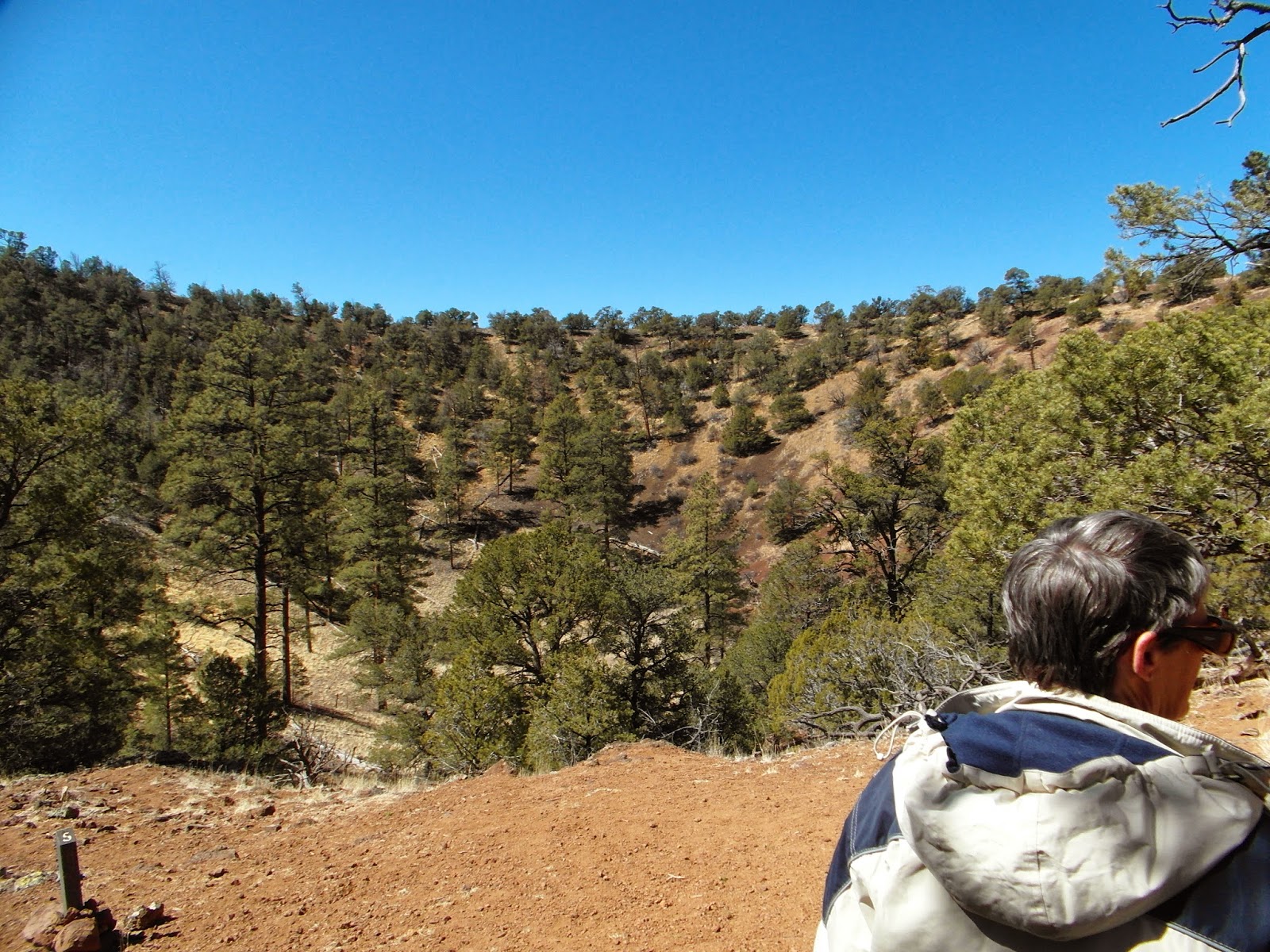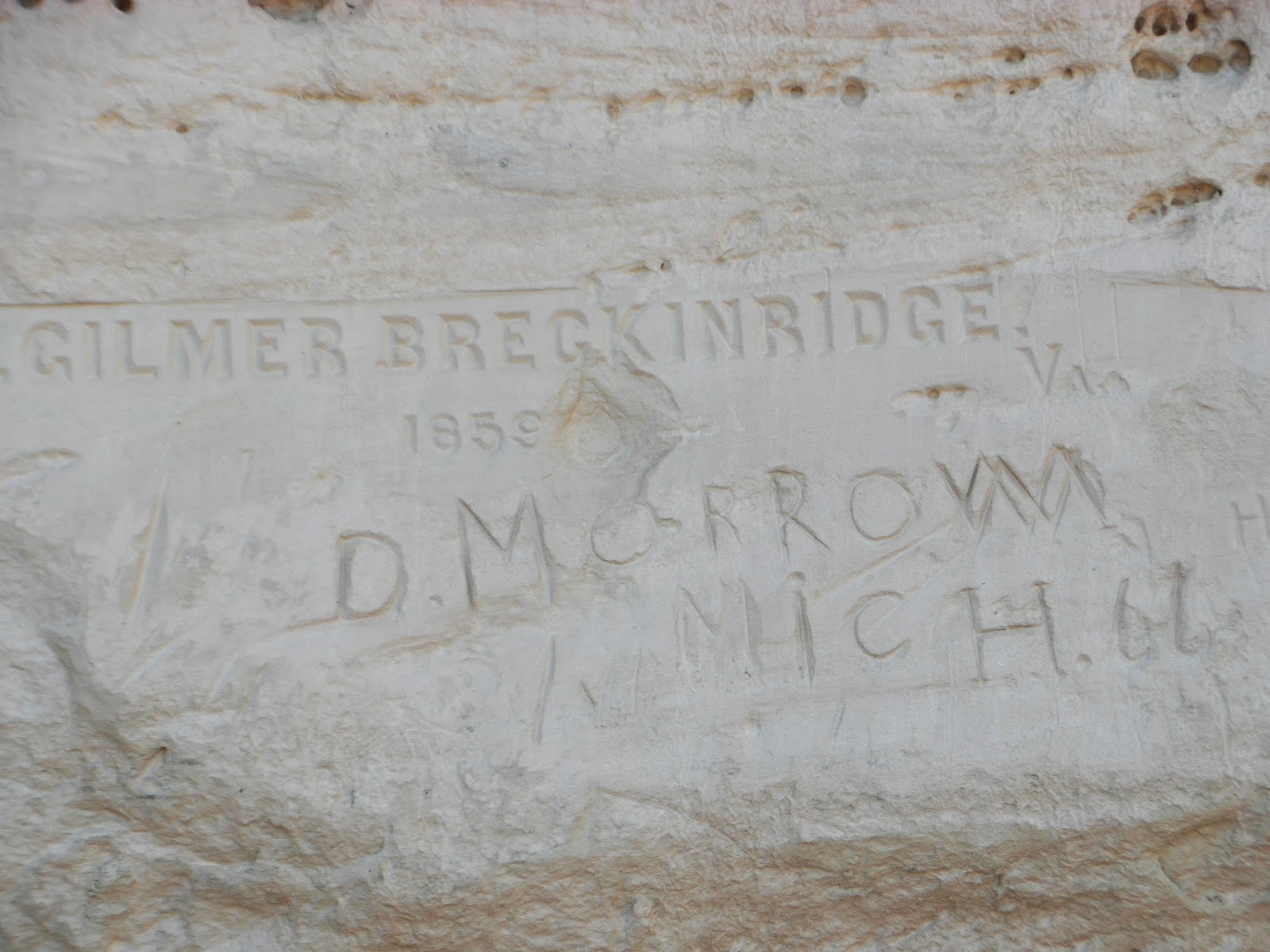Going home, we are heading east. And by going east, we pass through New Mexico.
So, who knew that New Mexico had volcanoes? Anyone? No? Neither did we. But just over the border from Arizona are two state
monuments. El Morro and El Malpais.
El Morro is all about petroglyphs of a different nature than what we've seen so far.
There
are ancient ones, and there are also ones that are not so much ancient as about
400 years old or less. Spanish
conquistadors carved their names on a cliff near a common watering pool. This one is in Spanish and is dated 1692.

Some have fancy lettering and others are pounded into rock with horseshoe nails. It’s like a history page written on rock.

We came upon this place in the afternoon and barely had time to do the hike before they closed. Luckily they also allowed camping. It was “dry camping”, no water or electricity, so another chance to play with hubby’s new toy, the generator.
And it was free, so it was a win-win for us.
Not 20 miles down the road is El Malpais. Spanish for “Bad Lands”, this is where the volcanoes are. There are 40 odd volcanoes on the monument property. The last eruption was 10,000 years ago, but up until then, there were several blowups of cinders, ash, and molten lava flows.
We walked the trails beside lava tunnels, lava trenches, lava rocks, and cinder. Most areas have now been covered by new soil and plants. Even trees show the adaptability of nature and have grown through several lava flows to reach soil beneath.
But a lot of the area, up to 100 miles away, is still covered in black volcanic rock, barren and dark.
We walked up a volcano cone. The cinders at the base and down the side were black and red, indicating that there were two eruptions, an oxidized ash covering the black original ash.

This is an old volcano, eroded with time. The cone itself isn’t very high and the inside is covered in trees and bushes.

From there we took a trip to Santa Fe. The old town section has all adobe buildings, little boutique stores, and two churches. At opposite ends of the spectrum, one church is over 400 years old with simple lines and originally adobe construction. The other is about 150 yrs and was supposed to be an emulation of the European Catholic churches.
We went on to Amarillo in northern Texas. The nights had been getting colder, and the days were sunny, but cool. Even in New Mexico we had one night where the temperature dropped down to -10C (14F). We planned to take a northeastern route, through Oklahoma City and St. Louis, gradually getting used to the cooler spring weather. But we were wearing winter coats and thermal underwear and we weren’t even out of Texas! The kicker was when we saw big trucks coming from Oklahoma. They were covered in frozen road slush and dripping ice.
The nice thing about our lifestyle is if we don’t like the
weather, we leave. So we changed course, and headed south. We figured if we
only have two more weeks left in the States, we may as well go someplace warm
and enjoy it.
So here we are in southern Alabama, right near the gulf coast. We can finally break out our shorts and put away the winter coats and hoodies.
At least for another week.
W















































